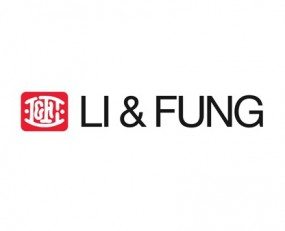
The annual results of Li & Fung confirm that the Hong-Kong-based sourcing and supply chain specialist is finding it increasingly difficult to cope with a challenging environment and changing market requirements. Its stock has plunged over 10% since mid-March, and most of that drop is due to its latest trading update.
The investor community closely watches Li & Fung – for a number of years it has been arguably the most important supplier of clothing worldwide, and was at the vanguard of the globalisation that has turned companies such as Walmart into such behemoths and is seen as a weathervane for consumer sentiment. It said in 2015 its turnover was “resilient despite deflationary environment” in the retail business, with sales down 2.4% from $19.2bn in the prior year to $18.8bn in the twelve months ending 31 December.
The turnover of the trading business decreased 2.8% to $17.9bn, but its logistics unit (less than $1bn of revenues) continued to grow, with sales surging 6.7%.
In a letter to shareholders, chief executive Spencer Fung pointed out that “overall, 2015 was a challenging year for the company”, during which several risks weighed on performance.
“Demanding macroeconomic, geopolitical and industry conditions created an extremely tough environment for our business,” he added.
Its major markets in the US, Europe and Asia all experienced “strong headwinds and globally our industry is going through an unprecedented structural change, led by the changing conditions at retail”, Fung added.
The situation is critical although it also looks manageable even though operating margin, a key performance metric, is rapidly deteriorating.
Its core EBIT dropped 15% to $512m from $604m on the back of rising operating costs, up 2.2% year-on-year which remained flat, however, in the second half of the year. On the bright side, the group also said that its trading unit volume increased overall due to strength of a multi-channel sourcing strategy.
Unsurprisingly, earnings and dividends per shares are falling. Not only did net earnings fall 30% year-on-year, but they now represent 2.2% of total revenues against 2.8% in 2014, which points to a lower level of net profitability.
The company’s gross debt position is virtually unchanged at $1.45bn; its debt maturity schedule should leave it plenty of financial flexibility until the end of 2016, given that large repayments (of about $600m) are due later next year. However, a warning sign for the company is that its gross cash position plunged 37% from $538m to $342m year-on-year. Its balance sheet is shrinking, and that is inevitable in this environment.
Finally, operating cash flow was down almost $100m to $543m, while capital investment marginally grew – a combination that inevitably harmed its free cash flow profile. Fung concluded that all indications point towards a challenging 2016, but he remained “confident we will weather these changes as we build for the future”.
Source: Transport Intelligence, 23rd March 2016
Author: Alessandro Pasetti